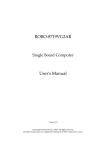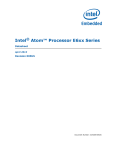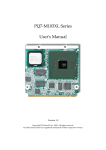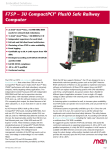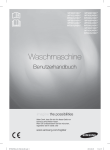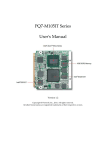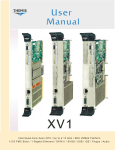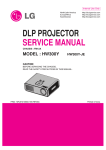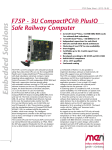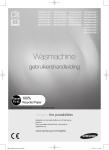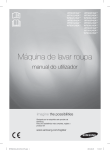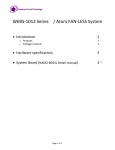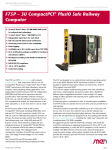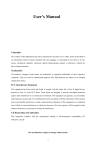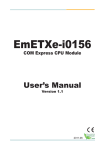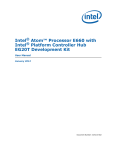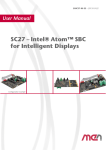Download NANO-6040/6040L Series User`s Manual
Transcript
NANO-6040/6040L Series
NANO-ITX Board
User's Manual
Version 1.2
Copyright © Portwell, Inc., 2012. All rights reserved.
All other brand names are registered trademarks of their respective owners.
Preface
Table of Contents
How to Use This Manual
Chapter 1 System Overview.......................................................................................................1-1
1.1 Introduction ....................................................................................................... 1-1
1.2 Check List........................................................................................................... 1-1
1.3 Product Specification........................................................................................ 1-1
1.4 System Configuration....................................................................................... 1-3
1.4.1 Mechanical Drawing................................................................................ 1-4
1.5 System Architecture.......................................................................................... 1-5
Chapter 2 Hardware Configuration ...........................................................................................2-1
2.1 Jumper Setting ................................................................................................... 2-1
2.2 Connector Allocation........................................................................................ 2-3
Chapter 3 System Installation....................................................................................................3-1
3.1 Atom™ Ultra low power CPU (E620T/E640T/E660T/E680T) ................. 3-1
3.2 Intel® Platform Controller Hub EG20T ....................................................................... 3-1
3.3 Main Memory .................................................................................................... 3-1
3.4 Installing the NANO-6040 ............................................................................... 3-2
3.4.1 Chipset Component Driver. ................................................................... 3-2
3.4.2 Intel® Integrated Graphics. .................................................................... 3-2
3.4.3 Intel® PROSet Gigabit Ethernet Controller ......................................... 3-2
3.4.4 Audio Controller ...................................................................................... 3-3
3.5 WDT Function ................................................................................................... 3-3
3.6 GPIO.................................................................................................................... 3-4
Chapter 4 BIOS Setup Information............................................................................................4-1
4.1 Entering Setup -- Launch System Setup ........................................................ 4-1
4.2 Main .................................................................................................................... 4-2
4.3 Advanced ........................................................................................................... 4-3
4.4 Chipset.............................................................................................................. 4-18
4.5 Boots.................................................................................................................. 4-25
4.6 Security ............................................................................................................. 4-28
4.7 Save & Exit ....................................................................................................... 4-29
Chapter 5 Troubleshooting ........................................................................................................5-1
5.1 Hardware Quick Installation........................................................................... 5-1
5.2 BIOS Setting ....................................................................................................... 5-2
5.3 Q&A .................................................................................................................... 5-4
Preface
How to Use This Manual
The manual describes how to configure your NANO-6040 system board to meet
various operating requirements. It is divided into five chapters, with each chapter
addressing a basic concept and operation of Single Host Board.
Chapter 1: System Overview. Presents what you have in the box and give you an
overview of the product specifications and basic system architecture for this series
model of single host board.
Chapter 2: Hardware Configuration. Show the definitions and locations of Jumpers
and Connectors that you can easily configure your system.
Chapter 3: System Installation. Describes how to properly mount the CPU, main
memory and Compact Flash to get a safe installation and provides a programming
guide of Watch Dog Timer function.
Chapter 4: BIOS Setup Information. Specifies the meaning of each setup
parameters, how to get advanced BIOS performance and update new BIOS. In
addition, POST checkpoint list will give users some guidelines of trouble-shooting.
Chapter 5: Troubleshooting. Provide various of useful tips to quickly get
NANO-6040 running with success. As basic hardware installation has been
addressed in Chapter 3, this chapter will basically focus on system integration issues,
in terms of backplane setup, BIOS setting, and OS diagnostics.
The content of this manual is subject to change without prior notice. These changes
will be incorporated in new editions of the document. The vendor may make
supplement or change in the products described in this document at any time.
System Overview
Chapter 1
System Overview
1.1
Introduction
Portwell Inc., a world-leading innovator in the Industrial PC (IPC) market and a
member of the Intel® Communications Alliance, has launched its new
NANO-6040 wide-temperature product for embedded system board (ESB) that
combines a smaller footprint, lower power consumption, robust computing
power and with longevity support.
The NANO-6040 is specifically designed to operate at very low power
consumption and low heat, so it can be a truly fanless configuration and battery
operated. Base on Intel® System Controller Hub EG20T, the NANO-6040
supports 1GB or 2GB on board memory and comes with two SATA, one
Mini-PCIe socket, dual independent display by VGA and 18/24-bit LVDS, one
gigabit Ethernet, and five USB port (two ports are on rear IO). It also built with
DC 12V input.
Base on leading Intel® Atom solution, NANO-6040 is a compact and ultra low
power dissipation board for Digital Signage, Digital Security Surveillance (DSS)
and vehicle applications…etc.
1.2
Check List
The NANO-6040 package should cover the following basic items
3
3
3
3
One NANO-6040 NANO-ITX Main Board
One 2-in-1 Heatsink
One Installation Resources CD-Title
One SATA cable
If any of these items is damaged or missing, please contact your vendor and keep
all packing materials for future replacement and maintain.
1.3
Product Specification
z Main Processor
- On board Intel® ATOMTM E6x0T series processor
z Chipset
- Intel® System Controller Hub EG20T
NANO-6040/NANO-6040L User’s Manual
1-1
System Overview
z System BIOS
- AMI uEFI BIOS
z Main Memory
- 1GB or 2GB DDR2 memory on board
z
Power input
- DC 12V input on rear I/O
- 4pin +12V power connector on board
- (DC 12V Jack and 4pin power connector can’t be used at the same time)
z Serial Port
- Support one RS232/422/485 port on rear I/O for NANO-6040 series (adjust
by bios)
- Support one RS232/422/485 port by on board connector for NANO-6040L
series (adjust by bios)
z USB Interface
- Support five USB (Universal Serial Bus) ports, two on rear I/O and three on
board header for internal devices.
z SATA Interface
- Support two SATA II ports
z SD interface
- Support one SD socket
- Support boot from SD card
z Audio Interface
- Rear I/O Audio Jack for Mic-In and Line-Out (NANO-6040 series)
- Rear I/O Audio Jack for Line-Out (NANO-6040L series)
- On-Board pin header for Mic-In and Line-Out
z Watch Dog Timer
- Support WDT function through software programming for enable/disable
and interval setting
- General system reset
z Display
- Support dual independent display by VGA and 18/24-bit LVDS
z On-board Ethernet LAN
- One Gigabit Ethernet (10/100/1000 Mbits/sec) LAN ports using Intel
82574IT PCI-Expressx1 interface GbE Controller
- Support Wake on LAN function
z High Drive GPIO
- On-board programmable 8-bit Digital I/O interface
z Cooling Fans
- Support one 3-pin power connector for system fan
NANO-6040/NANO-6040L User’s Manual
1-2
System Overview
z System Monitoring Feature
- Monitor system temperature and major power sources.
z Outline Dimension (L x W)
- 120mm(4.72’’) x 120mm(4.72’’)
z Power Requirements
z Configuration
1.4
System Configuration
CPU Type
SBC BIOS
Memory
Intel® Atom™ CPU E680T @ 1.6GHz FSB:399.1MHz L2:512KB
VGA Card
VGA Driver
onboard Intel® Corporation Atom E680T Embedded Media and Graphics
LAN Card
LAN Driver
Audio Card
Audio Driver
Chip Driver
USB 2.0 Driver
onboard Intel® 82574IT Gigabit Network Connection
Portwell, Inc. NANO-6040 TEST BIOS(11124TOO)
onboard DDR2 800 1G (SEC K4T1G084QF)
Intel® Corporation Atom E680T Embedded Media and Graphics Driver
Version: 1.5.2.1816
Intel® 82574L Gigabit Network Connection Driver Version:11.1.6.0
onboard Realtek ALC892 High Definition Audio
Realtek High Definition Audio Driver Version: 5.10.0.6000
Intel® Chipset Device Software Driver Version: 9.1.2.1013
SATA HDD
Intel® Platform Controller Hub EG20T USB OHCI Controller Driver
Version: 9.1.2.1012
Seagate ST3160813AS 160GB
FDD
SMARTDiSK FDUSB-TM
CDROM
Power Supply
Pioneer DVR-S19LBK
Seasonic SSA-0651-1 60W
CPU
Memory
DC
Power ON
Full Loading
10Min
Full Loading
30Min
1.6G
1.6G
1.6G
1.6G
1G
1G
2G
2G
Power
Adapter
Power
Adapter
3.40
3.27
3.13
2.95
1.84
1.79
1.90
1.75
1.83
1.81
1.91
1.81
z Operating Temperature
-40 °C ~ 80°C
z Storage temperature
-20 ~ 85 °C
z Relative Humidity
0% ~ 95%, non-condensing
NANO-6040/NANO-6040L User’s Manual
1-3
System Overview
1.4.1
Mechanical Drawing
NANO-6040/NANO-6040L User’s Manual
1-4
System Overview
1.5
System Architecture
All of details operating relations are shown in NANO-6040 series System Block
Diagram.
NANO-6040/NANO-6040L System Block Diagram
NANO-6040/NANO-6040L User’s Manual
1-5
BIOS Setup Information
Chapter 2
Hardware Configuration
This chapter gives the definitions and shows the positions of jumpers, headers and
connector. All of the configuration jumpers on NANO-6040 series are in the proper
position. The default settings are indicated with a star sign (Ì).
2.1
Jumper Setting
In the following sections, Short means covering a jumper cap over jumper pins; Open
or N/C (Not Connected) means removing a jumper cap from jumper pins. Users can
refer to Figure 2-1 for the Jumper allocations.
Figure 2-1 NANO-6040 Jumper and Connector Locations (Top)
NANO-6040/NANO-6040L User’s Manual
2-1
BIOS Setup Information
Figure 2-2 NANO-6040 Jumper and Connector Locations (Bottom)
Specification
JP1: LVDS Power Level (Default 1-3)
JP2: LVDS Back-light Power Level(Default 1-3,2-4)
JP5: Auto Power Button Selection(Default close)
JP1 : LVDS Power Level
JP1
1-3
3-4
3-5
Process Selection
3.3V Ì
12V
5V
JP2 : LVDS Back-light Power Level
JP2
1-3,2-4
1-3,4-6
3-5,2-4
3-5,4-6
Process Selection
5V, Active HighÌ
12V, Active High
5V, Active Low
12V, Active Low
NANO-6040/NANO-6040L User’s Manual
2-2
BIOS Setup Information
JP5 : Auto Power Button Selection
JP5
Close
Open
2.2
Function
ONÌ
OFF
Connector Allocation
I/O peripheral devices are connected to the interface connectors
Connector Function List
Connector
J1
J2
J3
J4
J5
J6
J8
J9
J10
J11/J15
J13/J14
J16
J17
J18
J19
J20
J21
J22
J23
J24
J26
J27
Function
VGA Connector
DC Jack
Audio Jack
COM Port
Dual Port USB Connector
Signal Port RJ45 Connector
Audio Header
LVDS Backlight Inverter Connector
LVDS Connector
12V Connector
USB Header
Mini-PCI E Connector
RTC Battery Connector
Front Panel Control Header
I2C Header
Remark
SATA Connector
CAN Bus Header
GPIO Header
TPM BOX Header
3P FAN Power Connector
PCI-E x1 Slot
SD Slot
NANO-6040/NANO-6040L User’s Manual
2-3
BIOS Setup Information
Pin Assignments of Connectors
J1: D-SUB15 VGA Connector
5
1
10
6
15
PIN No.
1
3
5
7
9
11
13
15
11
Signal Description
RED
BLUE
Ground
Ground
NC
ID1
HSYNC
DDCCLK
PIN No.
2
4
6
8
10
12
14
Signal Description
GREEN
ID0
Ground
Ground
Ground
DDCDATA
VSYNC
PIN No.
B01
B02
B03
B04
B05
Signal Description
AC_GND
GND
AC_GND
MIC_IN_JD
MIC_B
J2: DC Jack
PIN No.
1
2
3
Signal Description
12V
GND
GND
J3: Audio Jack
PIN No.
A01
A02
A03
A04
A05
Signal Description
AC_GND
FRONT_T
AC_GND
FRONT_JD
FRONT_B
J4 : COM Port
PIN No.
Signal Description
PIN No.
Signal Description
1
Data Carrier Detect (DCD)
2
Receive Data (RXD)
3
Transmit Data (TXD)
4
Data Terminal Ready (DTR)
5
GND
6
Data Set Ready (DSR)
7
Request to Send (RTS)
8
Clear to Send (CTS)
9
Ring Indicator (RI)
Note: NANO-6040L series support COM port by on board connector.
NANO-6040/NANO-6040L User’s Manual
2-4
BIOS Setup Information
J5: Dual Port USB
PIN No.
A1
A2
A3
A4
Signal Description
+5V
USBD0-1N
USBD0-1P
Ground
PIN No.
B1
B2
B3
B4
Signal Description
+5V
USBD0-1N
USBD0-1P
Ground
PIN No.
2
4
6
8
10
Signal Description
MIC_B
AC_GND
AC_GND
AC_GND
AC_GND
J6: Signal Port RJ45 Port
PIN No.
1
2
3
4
5
6
7
8
9
10
11
12
13
14
Signal Description
L1_MDIP0
L1_MDIN0
L1_MDIP1
L1_MDIN1
VCTREF_GBE0_CT
NC
L1_MDIP2
L1_MDIN2
L1_MDIP3
L1_MDIN3
VSB3
LAN1_ACTLAN1_1000#
LAN1_100#
J8: Audio Header
PIN No.
1
3
5
7
9
Signal Description
MIC_T
NC
NC
FRN_T
FRN_B
J9: LVDS Backlight Inverter Connector
PIN No.
1
2
3
4
5
Signal Description
BACKLIGH_EN
GND
VCC12
L_BKLTCTL
VCC
NANO-6040/NANO-6040L User’s Manual
2-5
BIOS Setup Information
J10: LVDS Connector
PIN No.
1
3
5
7
9
11
13
15
17
19
21
23
25
27
29
Signal Description
VDD_LVDS
LVDSA_DATA0
LVDSA_DATA1
LVDSA_DATA2
LVDSA_DATA3
LVDSA_CLK
NC
GND
NC
NC
NC
NC
NC
NC
GND
PIN No.
2
4
6
8
10
12
14
16
18
20
22
24
26
28
30
Signal Description
VDD_LVDS
LVDSA_DATA#0
LVDSA_DATA#1
LVDSA_DATA#2
LVDSA_DATA#3
LVDSA_CLK#
NC
GND
NC
NC
NC
NC
NC
NC
GND
PIN No.
2
4
6
8
10
Signal Description
J13: USB Header (5Px2)
10
2
1
7
PIN No.
1
3
5
7
9
Signal Description
+5V
USBDUSBD+
GND
NC
+5V
USBDUSBD+
GND
NC
J14 : USB Header (5Px1)
PIN No.
1
3
5
7
9
Signal Description
+5V
USBDUSBD+
GND
NC
NANO-6040/NANO-6040L User’s Manual
2-6
BIOS Setup Information
J15 : 12V Connector
PIN No.
1
3
Signal Description
GND
12V
PIN No.
Signal Description
2
GND
4
12V
J16: Mini-PCIE Slot
PIN No.
1
3
5
7
9
11
13
15
17
19
21
23
25
27
29
31
33
35
37
39
41
43
45
47
49
51
Signal Description
PCIE_WAKE#
N/C
N/C
CLKREQ#
GND
DF_CLK_PCIE#
DF_CLK_PCIE
GND
N/C
N/C
GND
DF_PCIE_RXN3
DF_PCIE_RXP3
GND
GND
DF_PCIE_TXN3
DF_PCIE_TXP3
GND
N/C
N/C
N/C
N/C
N/C
N/C
N/C
N/C
PIN No.
2
4
6
8
10
12
14
16
18
20
22
24
26
28
30
32
34
36
38
40
42
44
46
48
50
52
Signal Description
VCC3
GND
VCC1_5
N/C
N/C
N/C
N/C
N/C
GND
N/C
RST#
3.3VAUX
GND
VCC1_5
SMB_CLK
SMB_DAT
GND
DF_USB_PN5
DF_USB_PP5
GND
N/C
N/C
N/C
VCC1_5
GND
VCC3
J17 : RTC Battery Connector
PIN No.
1
2
Signal Description
Positive
Negative
NANO-6040/NANO-6040L User’s Manual
2-7
BIOS Setup Information
J18: Front Panel Control Header
PIN No.
1
3
5
7
9
Signal Description
PWR_LEDSUS_LEDHDD_LED+
RST_BTN
GND
PIN No.
2
4
6
8
10
Signal Description
PWR_LED+
SUS_LED+
HDD_LEDGND
PWR_BTN
PIN No.
P1
P2
P3
P4
P5
P6
P7
P8
P9
P10
P11
P12
P13
P14
P15
Signal Description
VCC3
VCC3
VCC3
GND
GND
GND
VCC
VCC
VCC
GND
GND
GND
VCC12
VCC12
VCC12
J19: I2C Header
PIN No.
1
2
Signal Description
I2C_CLK
I2C_DATA
J20/J25: SATA Connector
PIN No.
S1
S2
S3
S4
S5
S6
S7
Signal Description
GND
DF_SATA_TX+0
DF_SATA_TX-0
GND
DF_SATA_RX-0
DF_SATA_RX+0
GND
J21: CAN Bus Header
PIN No.
1
2
3
Signal Description
CAN_H
GND
CAN_L
NANO-6040/NANO-6040L User’s Manual
2-8
BIOS Setup Information
J22: GPIO Header
PIN No.
1
3
5
7
9
Signal Description
GPIO0
GPIO1
GPIO2
GPIO3
GND
PIN No.
2
4
6
8
10
Signal Description
GPIO4
GPIO5
GPIO6
GPIO7
VCC
PIN No.
2
4
6
8
10
12
14
16
18
20
Signal Description
GND
NC
VCC
LAD2
LAD1
GND
SMB_DAT
SERIRQ
NC
NC
J23: TPM BOX Header
PIN No.
1
3
5
7
9
11
13
15
17
19
Signal Description
PCI_CLK
LFRAME#
PLT_RST#
LAD3
VCC3
LAD0
SMB_CLK
VCC3
GND
NC
J24: 3P FAN Power Connector
12 3
PIN No.
1
2
3
Signal Description
Ground
+12V
Fan Speed Detecting signal
NANO-6040/NANO-6040L User’s Manual
2-9
BIOS Setup Information
J26: PCI-Express x1 Connector
PIN No.
A01
A02
A03
A04
A05
A06
A07
A08
A09
A10
A11
A12
A13
A14
A15
A16
A17
A18
Signal Description
NC
12V
12V
GND
NC
NC
NC
NC
3.3V
3.3V
PLT_RST#
GND
DF_CLK_PCIEx1_P
DF_CLK_PCIEx1_N
GND
DF_PCIE2_RX_P
DF_PCIE2_RX_N
GND
PIN No.
B01
B02
B03
B04
B05
B06
B07
B08
B09
B10
B11
B12
B13
B14
B15
B16
B17
B18
Signal Description
12V
12V
12V
GND
SMB_CLK
SMB_DATA
GND
3.3V
NC
VSB3
PCIE_WAKE#
NC
GND
DF_PCIE2_TX_P
DF_PCIE2_TX_N
GND
PRSNT#
Ground
J27: SD Card Slot
PIN No.
1
2
3
4
5
6
7
8
9
Sa
Sb
Sc
Signal Description
DAT3
CMD_RSP
GND
VCC
CLK
GND
DAT0
DAT1
DAT2
WP#
CD#
CD#_COM
NANO-6040/NANO-6040L User’s Manual
2-10
BIOS Setup Information
Chapter 3
System Installation
This chapter provides the instructions to set up the system. The additional information
is enclosed to help you set up onboard devices
3.1
Atom™ Ultra low power CPU (E620T/E640T/E660T/E680T)
NANO-6040 equips Intel® ATOM E620T/ E640T/E660T/E680T CPU, it’s an ultra
low power consumption CPU. Alone with module type board and wide-temperature
capability, it is suitable for various kind of applications.
It’s an All-In-One CPU solution which also includes the function of Intel® Integrated
Graphic and PCI-Express signals.
3.2
Intel® Platform Controller Hub EG20T
NANO-6040 uses EG20T as IOH. It supports SATA II, USB,SD (Boot form SD
capability), I2C BUS and CAN BUS, which is default supported by EG20T without
adding any add-on card.
3.3
Main Memory
NANO-6040 has on-board soldered memory chip. It’s DDR2 667 (E620T/E640T) or
800 MHz (E660T/E680T) with 2GB Memory.
NANO-6040/NANO-6040L User’s Manual
3-1
BIOS Setup Information
3.4
Installing the NANO-6040
To install your NANO-6040 into standard chassis or proprietary environment, please
perform the following:
Step 1: Check all jumpers setting on proper position.
Step 2: Place NANO-6040 into the dedicated position in the system.
Step 3: Attach cables to existing peripheral devices and secure it.
Note:
Please refer to section 3.4.1 to 3.4.4 to install INF/VGA/LAN/Audio drivers
3.4.1
Chipset Component Driver.
NANO-6040 uses state-of-art Intel® EG20T PCH chipset. It’s a new chipset that some
old operating systems might not be able to recognize. To overcome this compatibility
issue, for previous Windows Operating Systems such as Windows XP, please install
its INF before any of other Drivers are installed. You can find very easily this chipset
component driver in NANO-6040 CD-title.
Moreover, if using some old OS, the driver may not be supported anymore. We
recommend changing the different OS to comply with this new chipset.
3.4.2
Intel® Integrated Graphics.
With latest ATOM series structure, NANO-6040 has integrated graphic built-in
CPU. Therefore Intel® Integrated Graphic supports sharing on board physical
memories. NANO-6040 has internal 24bit 1ch LVDS & SDVO signal via Chrontel
CH7317A Transmitter to transform VGA output. This combination makes
NANO-6040 an excellent piece of multimedia hardware.
With no additional video adaptor, this onboard video will usually be the system
display output. By adjusting the BIOS setting to disable on-board VGA, an add-on
PCI-Express x1 Graphic card can take over the system display.
Drivers Support
Please find all the drivers in the NANO-6040 CD-title. Drivers support, Windows
XP/Win7.
3.4.3
Intel® PROSet Gigabit Ethernet Controller
Drivers Support
Please find Intel® WG82574IT driver in /Ethernet directory of NANO-6040 CD-title.
The drivers support Windows XP/Win7.
NANO-6040/NANO-6040L User’s Manual
3-2
BIOS Setup Information
3.4.4
Audio Controller
Please find Realtek ALC888 High Definition Audio driver form NANO-6040 CD-title.
The drivers support Windows XP/Win7.
3.5
WDT Function
The Watchdog Timer of motherboard consists of 8-bit programmable time-out
counter and a control and status register. Reference Intel E6XX Spec chapter 10.0 LPC
Interface (D31:F0), You can get the WDT base address from 84-87h (WDTBA). In
addition, you modify these I/O port, you must use the unlock() function.
WDT Control Command Example
// WDT_BAR: WDT Base address
#define
#define
#define
#define
#define
#define
PV1
PV2
RR0
RR1
WDTCR
WDTLR
0x00 // Preload Value 1
0x04 // Preload Value 2
0x0C // Reload Register 0
0x0D // Reload Register 1
0x10 // WDT Configuration Register
0x18 // WDT Lock Register
static void unlock_registers ()
{
outb (0x80, WDT_BAR + RR0);
delay (2);
outb (0x86, WDT_BAR + RR0);
delay (2);
}
Below are some example codes, which demonstrate the use of WDT.
unsigned short preload;
unsigned long clock;
// Setting PCI clock
clock = 33000000;
// 33 MHz
preload = (5 * (clock >> 15)) - 1;
// 5 seconds
// WDT Timeout Output Enable and WDT Reset Enable
unlock_registers ();
outb (18, WDT_BAR + WDTCR);
delay (2);
NANO-6040/NANO-6040L User’s Manual
3-3
BIOS Setup Information
// Setting timer
unlock_registers ();
outb (0, WDT_BAR + PV1);
delay (2);
unlock_registers ();
outl (preload, WDT_BAR + PV2);
delay (2);
// Trigger WDT. If you want to disable WDT, you can key 0x00.
unlock_registers ();
outb (0x02, WDT_BAR + WDTLR);
delay (2);
3.6
GPIO
The motherboard provides 8 input / output ports that can be individually configured
to perform a simple basic I/O function.
GPIO Pin Assignment
The NANO-6040 provides 8 input/output ports that can be individually configured
to perform a simple basic I/O function. Users can configure each individual port to
become an input or output port by programming register bit of I/O Selection. To
invert port value, the setting of Inversion Register has to be made. Port values can be
set to read or write through Data Register.
The GPIO port is located on J22 shown as follows.
WARNING
Do not short the pin 9 and 10 of J22!
NANO-6040/NANO-6040L User’s Manual
3-4
BIOS Setup Information
J22: GPIO Header
PIN No.
1
3
5
7
9
Signal Description
GPIO0
GPIO1
GPIO2
GPIO3
GND
PIN No.
2
4
6
8
10
Signal Description
GPIO4
GPIO5
GPIO6
GPIO7
VCC
Reference Intel Topcliff IOH Spec page 58. The GPIO memory base address from
PCI[D0:F2] register 14-17h.
GPIO Control Command Example
// GPIO_BAR: GPIO Base address
#define GPIO_OUTPUT 0x18
#define GPIO_INPUT
0x1C
#define GPIO_MODE
0x20
The basic function :
a. GPIO_BAR + GPIO_OUTPUT -> GPIO port output register
b. GPIO_BAR + GPIO_INPUT -> GPIO port input register
c. GPIO_BAR + GPIO_MODE -> GPIO port mode register
The GPIO pin define
GPIO1 (J22 PIN 1) ---- GPIO5 (J22 PIN 2)
GPIO2 (J22 PIN 3) ---- GPIO6 (J22 PIN 4)
GPIO3 (J22 PIN 5) ---- GPIO7 (J22 PIN 6)
GPIO4 (J22 PIN 7) ---- GPIO8 (J22 PIN 8)
GND
xxxx VCC
Below are some example codes, which demonstrate the use of GPIO.
// 1 -> out, 0 -> in
// Set GPIO 1~8 are input mode
writeb (0x00, GPIO_BAR + GPIO_MODE);
// Set GPIO 1~8 are output mode
writeb (0xFF, GPIO_BAR + GPIO_MODE);
unsigned char data;
// Store input state
NANO-6040/NANO-6040L User’s Manual
3-5
BIOS Setup Information
Chapter 4
BIOS Setup Information
NANO-6040 uses AMI BIOS structure stored in Flash ROM. These BIOS has a built-in
Setup program that allows users to modify the basic system configuration easily. This
type of information is stored in CMOS RAM so that it is retained during power-off
periods. When system is turned on, NANO-6040 communicates with peripheral
devices and checks its hardware resources against the configuration information
stored in the CMOS memory. If any error is detected, or the CMOS parameters need
to be initially defined, the diagnostic program will prompt the user to enter the
SETUP program. Some errors are significant enough to abort the start up
4.1
Entering Setup -- Launch System Setup
Power on the computer and the system will start POST (Power On Self Test) process.
When the message below appears on the screen, press <Del> key will enter BIOS
setup screen.
Press <Del> to enter SETUP
If the message disappears before responding and still wish to enter Setup, please
restart the system by turning it OFF and On or pressing the RESET button. It can be
also restarted by pressing <Ctrl>, <Alt>, and <Delete> keys on keyboard
simultaneously.
Press <F1> to Run SETUP or Resume
The BIOS setup program provides a General Help screen. The menu can be easily
called up from any menu by pressing <F1>. The Help screen lists all the possible keys
to use and the selections for the highlighted item. Press <Esc> to exit the Help screen.
NANO-6040/NANO-6040L User’s Manual
4-1
BIOS Setup Information
4.2
Main
Use this menu for basic system configurations, such as time, date etc.
Platform Information
These items show the Tunnel Creek Version and PUNIT Build Date and Time.
Read only.
NANO-6040/NANO-6040L User’s Manual
4-2
BIOS Setup Information
System Language
Choose the system default language
Choices: English.
System Time
The time format is <Hour> <Minute> <Second>. Use [+] or [-] to configure system
Time.
System Date
The date format is <Day>, <Month> <Date> <Year>. Use [+] or [-] to configure
system Date.
4.3
Advanced
Use this menu to set up the items of special enhanced features.
Launch PXE OpROM
Enable or Disable Boot Option for Legacy Network Devices
Choices: Disabled, Enabled.
Launch Storage OpROM
Enable of Disable Boot Option for Legacy Mass Storage devices with Option ROM
Choices: Disabled, Enabled.
NANO-6040/NANO-6040L User’s Manual
4-3
BIOS Setup Information
PCI Subsystems Settings
PCI, PCI-X and PCI Express Settings
PCI BUS Driver Version
Read only
PCI ROM Priority
In case of multiple Option ROMs (Legacy and EFI Compatible), specifies what PCI
Option ROM to launch
Choices: Legacy ROM, EFI Compatible ROM.
PCI Latency Timer
Value to be programmed into PCI Latency Timer Register
Choices: 32 PCI, 64 PCI, 96 PCI, 128 PCI, 160 PCI, 192 PCI, 224 PCI, 248 PCI Bus
Clocks.
VGA Palette Snoop
Enables or Disables VGA Palette Registers Snooping
Choices: Disabled, Enabled.
PERR# Generation
Enables or Disables PCI Device to Generate PERR#
Choices: Disabled, Enabled.
NANO-6040/NANO-6040L User’s Manual
4-4
BIOS Setup Information
SERR# Generation
Enables or Disables PCI Device to Generate SERR#
Relaxed Ordering
Enables or Disables PCI Express Device Relaxed Ordering
Choices: Disabled, Enabled.
Extended Tag
If ENABLED allows Device to use 8-bit Tag field as a requester
Choices: Disabled, Enabled.
No Snoop
Enables or Disables PCI Express Device No Snoop option
Choices: Disabled, Enabled.
Maximum Payload
Set Maximum Payload of PCI Express Device or allow System BIOS to select the
value
Choices: Auto, 128 Bytes, 256 Bytes, 512 Bytes, 1024 Bytes, 2048 Bytes, 4096 Bytes.
Maximum Read Request
Set Maximum Read Request Size of PCI Express Device or allow System BIOS to
select the value
Choices: Auto, 128 Bytes, 256 Bytes, 512 Bytes, 1024 Bytes, 2048 Bytes, 4096 Bytes.
Automatic ASPM
Automatically enable ASPM based on reported capabilities and known issues
Choices: Disabled. Auto, Force L0.
Warming: Enabling ASPM may cause some PCI-E devices to fail
Extended Synch
If ENABLED allows generation of Extend Synchronization patterns
Choices: Disabled, Enabled.
NANO-6040/NANO-6040L User’s Manual
4-5
BIOS Setup Information
ACPI Settings
System ACPI Parameters
Enable Hibernation
Enables or Disables System ability to Hibernate (OS/S4 Sleep State). This option may
be not effective with some OS
Choices: Enabled, Disabled.
ACPI Sleep State
Select the highest ACPI sleep state the system will enter, when the SUSPEND button
is pressed
Choices: Suspend Disabled, S3 (Suspend to RAM).
NANO-6040/NANO-6040L User’s Manual
4-6
BIOS Setup Information
Trusted Computing
Trusted Computing (TPM) settings
TPM SUPPORT
Enables or Disables TPM support. O.S. will not show TPM. Reset of platform is
required
Choices: Enabled, Disabled.
NANO-6040/NANO-6040L User’s Manual
4-7
BIOS Setup Information
CPU Configuration
CPU Configuration Parameters
These items show the advanced specifications of your CPU. Read only
Intel SpeedStep
Enable or Disable Intel ® SpeedStep™
Choices: Disabled, Enabled.
Hyper-Threading
Enabled for Windows XP and Linux (OS optimized for Hyper-Threading
Technology) and Disabled for other OS (OS not optimized for Hyper-Threading
Technology).
Choices: Disabled, Enabled.
Execute Disable Bit
XP can prevent certain classes of malicious buffer overflow attacks when combined
with a supporting OS (Windows Server 2003 SP1, Windows XP SP2, SuSE Linux 9.2,
RedHat Enterprise 3 Update 3.).
Choices: Disabled, Enabled.
Limit CPUID Maximum
Disabled for Windows XP
Choices: Disabled, Enabled.
NANO-6040/NANO-6040L User’s Manual
4-8
BIOS Setup Information
Intel Virtualization Technology
When enabled, a VMM can utilize the additional hardware capabilities provided by
Vanderpool Technology
Choices: Disabled, Enabled.
C-States
Enable or Disable C2 and above
Choices: Disabled, Enabled.
Enhanced C1-C4
Enable or Disable Enhanced C1-C4 and State.
Choices: Disabled, Enabled.
SDIO Configuration
SDIO Configuration Parameters
SDIO Access Mode
Auto Option: Access SD device in DMA mode if controller supports it, otherwise in
PIO mode. DMA Option: Access SD device in DMA mode. PIO Option: Access SD
device in PIO mode.
Choices: Auto, DMA, PIO.
NANO-6040/NANO-6040L User’s Manual
4-9
BIOS Setup Information
Thermal Configuration
Thermal Configuration Parameters
Critical Trip Point
This value controls the temperature of the ACPI Critical Trip Point – the point in
which the OS will shut the system off.
NOTE: 100C is the Plan of Record (PDR) for all Intel mobile processors.
Choices: POR, 30C, 40C , 50C ,60C , 70C ,80C ,90C , 95C.
Active Trip Point
This value controls the temperature of the ACPI Active Trip Point – the point in
which the OS will turn the processor fan on
Choices: Disabled, 30C, 40C, 50C, 60C, 70C, 80C, 90C, 95C, 100C.
Passive Trip Point
This value controls the temperature of the ACPI Passive Trip Point – the point in
which the OS will begin throttling the processor.
Choices: Disabled, 30C, 40C, 50C, 60C, 70C, 80C, 90C, 95C, 100C.
NANO-6040/NANO-6040L User’s Manual
4-10
BIOS Setup Information
Passive TC1 Value
This value sets the TC1 value for the ACPI Passive Cooling Formula. Range 1 – 16
Choices: 1-16
Passive TC2 Value
This value sets the TC2 value for the ACPI Passive Cooling Formula. Range 1 – 16
Choices: 1-16
Passive TSP Value
This item sets the TSP value for the ACPI Passive Cooling Formula. It represents in
tenths of a second how often the OS will read the temperature when passive cooling
is enabled. Range 2 – 32
Choices: 2-32
Thermal Offset
Whether Thermal Offset (read from CPU MSR 03Fh) is used by the KSC to adjust
thermal management
Choices: Disabled, Enabled.
DTS Calibration
Enable/Disable DTS Calibration
Choices: Disabled, Enabled.
Info Report Configuration
Info Report Configuration
NANO-6040/NANO-6040L User’s Manual
4-11
BIOS Setup Information
Post Report
Post Report Support Enabled/Disabled
Choices: Disabled, Enabled.
Info Error Message
Info Error Message Support Enabled/Disabled
Choices: Disabled, Enabled.
Summary Screen
Summary Screen Support Enabled/Disabled
Choices: Disabled, Enabled.
USB Configuration
USB Configuration Parameters
Legacy USB Support
Enables Legacy USB support. AUTO option disables legacy support if no USB devices
are connected. DISABLE option will keep USB devices available only for EFI
applications.
Choices: Disabled, Enabled, Auto.
NANO-6040/NANO-6040L User’s Manual
4-12
BIOS Setup Information
EHCI Hand-Off
This is a workaround for OSes without EHCI hand-off support. The EHCI ownership
change should claim by EHCI driver.
Choices: Disabled, Enabled.
USB transfer time-out
The Time-out value for Control, Bulk, and Interrupt transfers.
Choices: 1 sec, 5 sec, 10 sec, 20 sec.
Device Reset time-out
USB mass storage device Start Unit command time-out
Choices: 10 sec, 20 sec, 30 sec, 40 sec.
Device Power-up delay
Maximum time the device will take before it properly reports itself to the Host
Controller. ‘Auto’ uses default value: for a Root port it is 100 ms , for a Hub port the
delay is taken from Hub descriptor.
Choices: Auto, Manual.
Super IO Configuration
System Super IO Chip Parameters
NANO-6040/NANO-6040L User’s Manual
4-13
BIOS Setup Information
Serial Port 0 Configuration
Set Parameters of Serial Port 0 (COMA)
Serial Port
Choices: Disabled, Enabled.
Change Settings
Select an optimal setting for Super IO Device.
Choices: Auto. IO=3F8h; IRQ=4, IO=3F8h; IRQ=3,4,5,6,7,10,11,12, IO=2F8h;
IRQ=3,4,5,6,7,10,11,12,
IO=3E8h;
IRQ=3,4,5,6,7,10,11,12,
IO=2E8h;
IRQ=3,4,5,6,7,10,11,12.
Select UART Mode
Select RS232/RS485/RS422
Choices: RS232, RS485, RS422.
Power Failure
Choices: Keep last state, Always on, Always off.
NANO-6040/NANO-6040L User’s Manual
4-14
BIOS Setup Information
H/W Monitor
Monitor hardware status. Read Only.
Serial Port Console Redirection
Serial Port Console Redirection
NANO-6040/NANO-6040L User’s Manual
4-15
BIOS Setup Information
Console Redirection
Console Redirection Enable or Disable.
Choices: Disabled, Enabled.
Console Redirection Settings
The settings specify how the host computer and the remote computer (which the user
is using) will exchange data. Both computers should have the same or compatible
settings.
Terminal Type
VT-UTF8 is the preferred terminal type for out-of-road management. The next best
choice is VT100+ and then VT100. See above, in Console Redirection Settings page,
for more Help with Terminal Type/Emulation.
Choices: VT100, VT100+, VT-UTF8, ANSI.
Bits per second
Selects serial port transmission speed. The speed must be matched on the other side.
Long or noisy lines may require lower speeds.
Choices: 9600, 19200, 38400, 57600, 115200.
Data Bits
Data Bits
Choices: 7, 8.
NANO-6040/NANO-6040L User’s Manual
4-16
BIOS Setup Information
Parity
A parity bit can be sent with the data bits to detect some transmission errors. Even:
parity bit is 0 if the num of 1’s in the data bits is even. Odd: parity bit is 0 if num of 1’s
in the data bits is odd. Mark: parity bit is always 1. Space: parity bit is always 0. Mark
and Space Parity do not allow for error detection.
Choices: None, Even, Odd, Mark, Space.
Stop Bits
Stop bits indicate the end of a serial data packet. (A start bit indicates the beginning).
The standard setting is 1 stop bit. Communication with slow devices may require
more than 1 stop bit.
Choices: 1, 2.
Flow Control
Flow control can prevent data loss from buffer overflow. When sending data, if the
receiving buffers are full, a ‘stop’ signal can be sent to stop the data flow. Once the
buffers are empty, a ‘start’ signal can be sent to re-start the flow. Hardware flow
control uses two wires to send start/stop signals.
Choices: None, Hardware RTS/CTS.
VT-UTF8 Combo Key Support
Enable VT-UTF8 Combination Key Support for ANSI/VT100 terminals.
Choices: Disabled, Enabled.
Recorder Mode
With this mode enabled only test will be sent. This is to capture Terminal data.
Choices: Disabled, Enabled.
Resolution 100X31
Enables or disables extended terminal resolution.
Choices: Disabled, Enabled.
Legacy OS Redirection Resolution
On Legacy OS, the number of Rows and Columns supported redirection.
Choices: 80x24, 80x25.
NANO-6040/NANO-6040L User’s Manual
4-17
BIOS Setup Information
4.4
Chipset
This menu controls the advanced features of the onboard North Bridge and South
Bridge and IOH Configuration.
North Bridge Chipset Configuration
North Bridge Parameters
NANO-6040/NANO-6040L User’s Manual
4-18
BIOS Setup Information
IGD Mode Select
Select the amount of system memory used by the Integrated Graphic Device.
Choices: Disabled, Enabled, 1MB, Enabled, 4MB, Enabled, 8MB, Enabled, 16MB,
Enabled, 32MB, Enabled, 48MB, Enabled, 64MB.
MSAC Mode Select
Select the size of the graphics memory aperture and untrusted space. Used by the
Integrated Graphic Device.
Choices: Enabled, 512MB, Enabled, 256MB, Enabled, 128MB.
Boot Display Configuration
Boot Display Configuration
Primary Display
Select which graphics controller to use as the primary boot display.
Choices: Auto, IGD, PEG.
Boot Display Device
Boot Display Device
Choices: Integrated LVDS, External CRT.
NANO-6040/NANO-6040L User’s Manual
4-19
BIOS Setup Information
Flat Panel Scaling
Flat Panel Scaling
Choices: Auto, Forced, Disabled.
Flat Panel Type
Flat Panel Type
Choices: 640x480 18Bit, 800x600 18Bit, 1024x768 18Bit, 800x480 18Bit, 1024x768 24Bit.
DPST Control
DPST Control
Choices: VBIOS-Default, DPST Disabled, DPST Enabled L1, DPST Enabled L2, DPST
Enabled L3, DPST Enabled L4, DPST Enabled L5.
PCI Express Ports Configuration
Enable or Disable the PCI Express Ports in the Chipset
PCI Express Root Port 0-3
Control the PCI Express Root Port 0-3.
Choices: Disabled, Enabled.
NANO-6040/NANO-6040L User’s Manual
4-20
BIOS Setup Information
PCI-to-PCI Bridge
P2P Controls Settings
Extra Bus Reserved
Extra Bus Reserved (0-7) for bridges behind this Root Bridge
Choices: 0-7.
PPM Config
PPM Config
NANO-6040/NANO-6040L User’s Manual
4-21
BIOS Setup Information
C-state POPUP
Enable/Disable C-state POPUP
Choices: Disabled, Enabled.
IOH Configuration
IOH Configuration Options
GPIO Configuration
NANO-6040/NANO-6040L User’s Manual
4-22
BIOS Setup Information
GPIO 0-11
Enable/Disable GPIO
Choices: Disabled, Enabled.
Wake On Lan Configuration
Wake On Lan Configuration settings
Wake On Lan
Enable/Disable WOL
Choices: Disabled, Enabled, OS.
NANO-6040/NANO-6040L User’s Manual
4-23
BIOS Setup Information
Wake On Ring Configuration
Wake On Ring Configuration settings
Wake On Ring
Enable/Disable WOR
Choices: Disabled, Enabled.
AHCI SATA Configuration
AHCI SATA Configuration settings
NANO-6040/NANO-6040L User’s Manual
4-24
BIOS Setup Information
Port0-1
Enable/Disable PORT0-1 Set transfer mode programming
Choices: Disabled, Enabled.
4.5
Boots
Use this menu to specify the priority of boot devices.
Quiet Boot
Enables/Disables Quiet Boot option
Choices: Disabled, Enabled.
Fast Boot
Enables/Disables boot with initialization of a minimal set of devices required to
launch active boot option. Has no effect for BBS boot options.
Choices: Disabled, Enabled.
NANO-6040/NANO-6040L User’s Manual
4-25
BIOS Setup Information
Setup Prompt Timeout
Number of seconds to wait for setup activation key
65535(0Xffff) means indefinite waiting
Choices: 1-65535.
Bootup Num-Lock State
Select the keyboard Numlock state
Choices: On, Off.
GateA20 Active
UPON REQUEST – GA20 can be disabled using BIOS services. ALWAYS – do not
allow disabling GA20 ; this option is useful when any RT code is executed above
1MB.
Choices: Upon Request, Always.
Option ROM Messages
Set display mode for Option ROM
Choices: Force BIOS, Keep Current.
Interrupt 19 Capture
Enabled: Allows Option ROMs to trap Int 19
Choices: Disabled, Enabled.
Boot Option #1-#2
Set the system boot order
NANO-6040/NANO-6040L User’s Manual
4-26
BIOS Setup Information
Hard Drive BBS Priorities
Set the order of the legacy devices in this group
Boot Option #1
Set the system boot order
NANO-6040/NANO-6040L User’s Manual
4-27
BIOS Setup Information
4.6
Security
Administrator Password
Set Setup Administrator Password
User Password
Set user password.
NANO-6040/NANO-6040L User’s Manual
4-28
BIOS Setup Information
4.7
Save & Exit
This menu allows you to load the BIOS default values or factory default settings into
the BIOS and exit the BIOS setup utility with or without changes.
Save Changes and Reset
Reset the system after saving the changes.
Discard Changes and Exit
Reset system setup without saving any changes
Restore Defaults
Restore/Load Defaults values for all the setup options.
Save as User Defaults
Save the changes done so far as User Defaults.
Restore User Defaults
Restore the User Defaults to all the setup options.
NANO-6040/NANO-6040L User’s Manual
4-29
BIOS Setup Information
Launch EFI Shell from filesystem device
Attempts to Launch EFI Shell application (Shell.efi) from one od the available
filesystem devices.
Boot into the initial shell environment, it can debug and dump the PCI Resource or
jump to next bootable device. If it doesn’t have boot device, it will return to BIOS
setup menu. If you want to know the shell command, you can visit the Intel official
hyperlink as below.
http://software.intel.com/en-us/articles/uefi-shell/#Internal_EFI_Shell_Commands
NANO-6040/NANO-6040L User’s Manual
4-30
Troubleshooting
Chapter 5
Troubleshooting
This chapter provides a few useful tips to quickly get NANO-6040 running with
success. As basic hardware installation has been addressed in Chapter 2, this chapter
will primarily focus on system integration issues, in terms of BIOS setting, and OS
5.1
Hardware Quick Installation
There are two methods to power on NANO-6040 which are 4 Pins DC +12V
connector or DC +12V IN Jack.
DC +12V Jack connects to NANO-6040. (J2)
4 Pins directly +12V DC input. (J15)
Do NOT connect DC +12V (J2) Jack and 4pins DC +12V (J15) at the same time.
NANO-6040/NANO-6040L User’s Manual
5-1
Troubleshooting
Serial ATA Hard Disk Setting for IDE
Serial ATA channel can only connect to one SATA hard disk at a time; there are total 2
connectors, J20 & J25. The installation of Serial ATA is simpler
and easier than IDE because of SATA hard disk doesn’t require HDD priority setting
jumper, which can reduce mistake of hardware installation. All you need to do is
plugging in two cables and choose SATA mode needed in BIOS.
5.2
BIOS Setting
To make sure that you have a successful start with NANO-6040, it is recommended
while going with the boot-up sequence. Hit the “Del or F2” key and enter the BIOS
setup menu to load default setting then tune up a stable BIOS configuration
according to your needs.
Restore the default optimal setting
When prompted with the main setup menu, please scroll down to “Restore
defaults”, press “Enter” and “Y” to load in default optimal BIOS setup. This will
force your BIOS setting back to the initial factory configuration. It is recommended to
do this so you can be sure the system is running with the BIOS setting that Portwell
has highly endorsed. As a matter of fact, users can load the default BIOS setting any
time when system appears to be unstable in boot up sequence.
NANO-6040/NANO-6040L User’s Manual
5-2
Troubleshooting
Improper disable operation
There are too many occasions where users disable a certain device/feature in one
application through BIOS setting. These variables may not be set back to the original
values when needed. These devices/features will certainly fail to be detected.
When the above conditions happen, it is strongly recommended to check the BIOS
settings. Make sure certain items are set as they should be. These include the
COM1/COM2 ports, USB ports, external cache, on-board VGA and Ethernet.
It is also very common that users would like to disable a certain device/port to
release IRQ resource. A few good examples are
Disable COM1 serial port to release IRQ #4
Disable COM2 serial port to release IRQ #3
Etc…
A quick review of the basic IRQ mapping is given below for your reference.
Interrupt Request Lines IRQ
IRQ#
Current Use
Default Use
IRQ 0
System ROM
System Timer
IRQ 1
System ROM
Keyboard Event
IRQ 2
Usable IRQ
【Unassigned】
IRQ 3
Usable IRQ
【Unassigned】
IRQ 4
System ROM
COM1
IRQ 5
Usable IRQ
【Unassigned】
IRQ 6
System ROM
Diskette Event
IRQ 7
Usable IRQ
【Unassigned】
IRQ 8
System ROM
Real-Time Clock
IRQ 9
Usable IRQ
【Unassigned】
IRQ 10
Usable IRQ
【Unassigned】
IRQ 11
Usable IRQ
【Unassigned】
IRQ 12
System ROM
IBM Mouse Event
IRQ 13
System ROM
Coprocessor Error
IRQ 14
System ROM
Hard Disk Event
IRQ 15
Usable IRQ
【Unassigned】
It is then very easy to find out which IRQ resource is ready for additional peripherals.
If IRQ resource is not enough, please disable some devices listed above to release
further IRQ numbers.
It is then very easy to find out which IRQ resource is ready for additional peripherals.
If IRQ resource is not enough, please disable some devices listed above to release
further IRQ numbers.
NANO-6040/NANO-6040L User’s Manual
5-3
Troubleshooting
5.3
Q&A
Question: Don’t find any Clear CMOS jumper.
Answer: There is no hardware implementation for clearing the CMOS in the Queens
Bay platform.
Question: We find the Read/Write speed of the NANO-6040 USB port in Windows
XP is slower than Win7.
Answer: The USB port read/write speed is only 98Mb/s in Windows XP. It is a
chipset limitation.
Question: We don’t find any jump setting to switch COM port function
(RS-232/422/485) in NANO-6040 board.
Answer: The COM port function can be selected in NANO-6040 BIOS.
Please select AdvancedÆ Super IO ConfigurationÆ
Select UART Mode to select RS232/RS485/RS422 mode.
Question: How to install the Windows XP with USB devices in NANO-6040 board?
Answer: Please follow those steps as below.
1. Copy the files in 'FD_Inst_WinXP' in the SATA driver package to the root of a
floppy disk. The SATA driver package can be obtained from
— iohsata.cat
— iohsata.inf
— iohsata.sys
— txtsetup.oem
2. Make sure that the target computer has a compatible floppy drive.
3. Insert the floppy disk prepared in step 1 into the floppy drive.
4. Insert the Windows XP SP3 installer into the CD-ROM and boot from the CD-ROM
to start the Windows XP SP3 installation.
5. Press <F6> to add further SCSI/RAID drivers when prompted during the very
early stage of the Windows installation.
NANO-6040/NANO-6040L User’s Manual
5-4
Troubleshooting
6. Press <S> to add an additional SCSI device. Select the correct driver (Intel® PCH
EG20T SATA AHCI Controller for Windows XP) and press <ENTER> to continue the
installation. This will install the Intel® PCH EG20T SATA AHCI controller driver
7. During the installation, the message box below may appear:
Press <Yes> to continue the installation.
NANO-6040/NANO-6040L User’s Manual
5-5
Troubleshooting
Please attention:
Intel suggests to install windows XP must detect USB device to J13, J14 and the top
USB port of the J5.
1. Please insert your USB Floppy disk in the top USB port of the J5 as below
picture.
NANO-6040/NANO-6040L User’s Manual
5-6
Troubleshooting
2. Please insert the USB Keyboard or mouse in J13.
3. Please insert the USB CD-ROM in J14.
Note:
Please visit our technical web site at http://www.portwell.com.tw
For additional technical information, which is not covered in this manual, you can
mail to [email protected] or you can also send mail to our sales, they will be
very delighted to forward them to us.
System Memory Address Map
Each On-board device in the system is assigned a set of memory addresses, which
also can be identical of the device. The following table lists the system memory
address used.
Memory Area
Size
Description
0000-003F
1K
Interrupt Area
0040-004F
0.3K
BIOS Data Area
0050-006F
0.5K
System Data
0070-0E2E
54K
DOS
0E2F-1074
9.1K
Program Area
1075-9C3F
559K
【Available】
First Meg
-- Conventional memory end at 625K -9C40-9FFF
15K
Extended BIOS Area
A000-AFFF
64K
VGA Graphics
B000-B7FF
32K
Unused
B800-BFFF
32K
VGA Text
C000-D2DF
75K
ROM
D2E0-EFFF
116K
Unused
F000-FFFF
64K
System ROM
HMA
64K
First 64K Extended
NANO-6040/NANO-6040L User’s Manual
5-7




























































